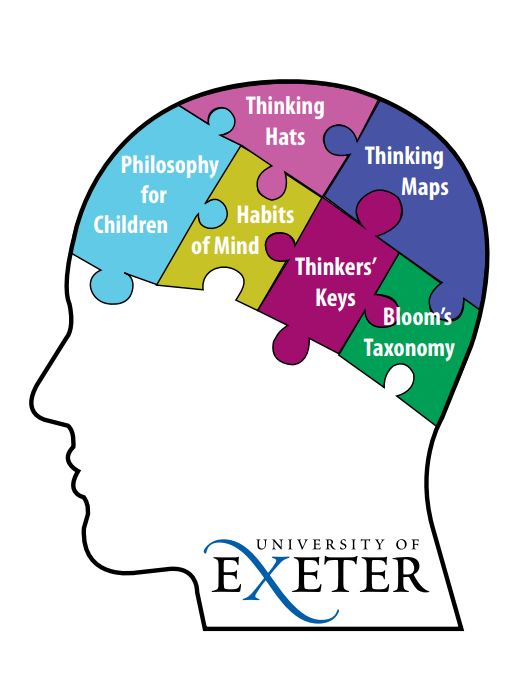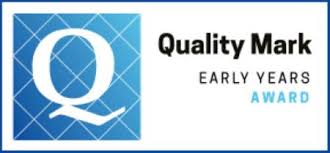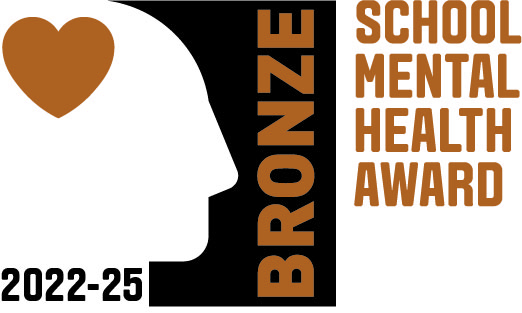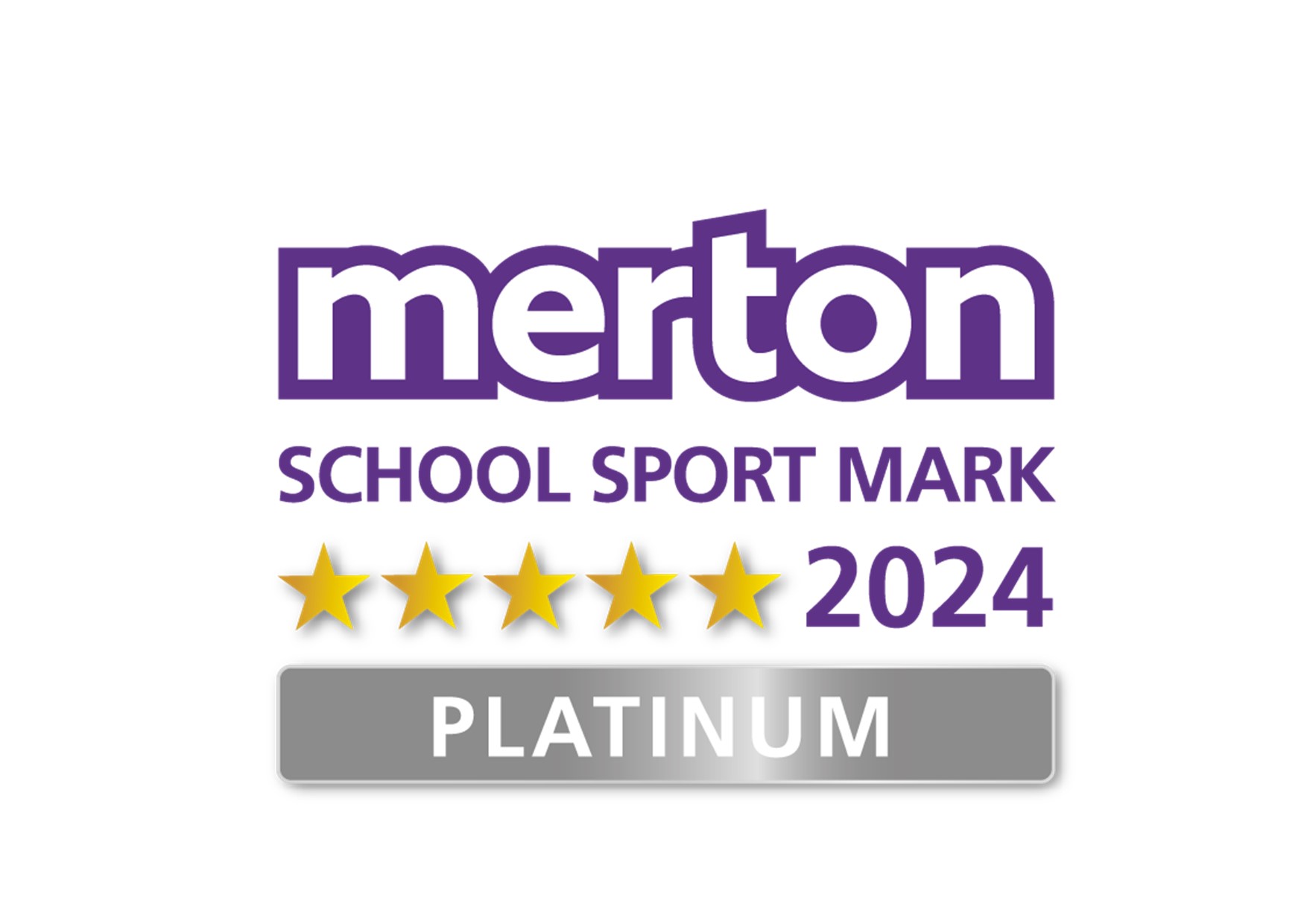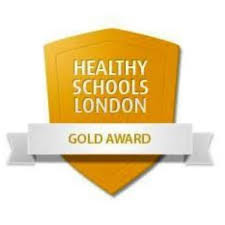Early Writing & Mark Making
At Hillcross we believe that good handwriting is an essential skill in the quest to spell and write fluently, confidently and competently. A joined handwriting style links kinaesthetic ‘muscle memory’ with the relationship between the sounds of our speech and the letter shapes, letter groupings and whole written words.
Although we see the value in developing handwriting we are aware that children need a range of physical development skills in order to complete handwriting. All children develop at different times and fine motor skills are one of the later physical skills to develop in children. At Hillcross, we are committed to ensuring we develop every child's physical development to ensure they are ready to start formal writing during their Reception year. We have developed a precise and strong long-term development plan that all children move through before we begin to teach formal handwriting.
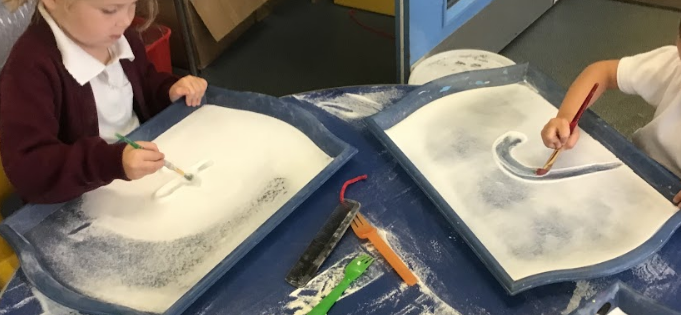
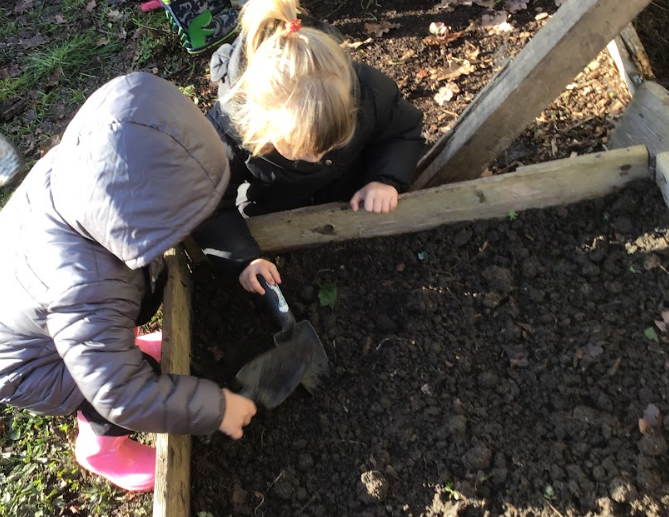
Physical Development and the Link to writing
In line with the EYFS curriculum guidance, Physical development is one of the Prime areas of learning and is key to ensuring the children can make progress in their mark making and writing. Children need to have developed strong Gross and Fine motor skills before handwriting can be taught. A Hillcross, our initial focus is on developing a child's Gross Motor skills. These include balance, core strength and coordination, alongside their ability to produce large arm movements, climbing and running. Young children need to develop these large motor skills before they will be able to develop their fine motor movements. At Hillcross, as part of our physical development curriculum plan, we ensure all children are at expected levels of physical development by completing the following activities across their time in Nursery and Reception.
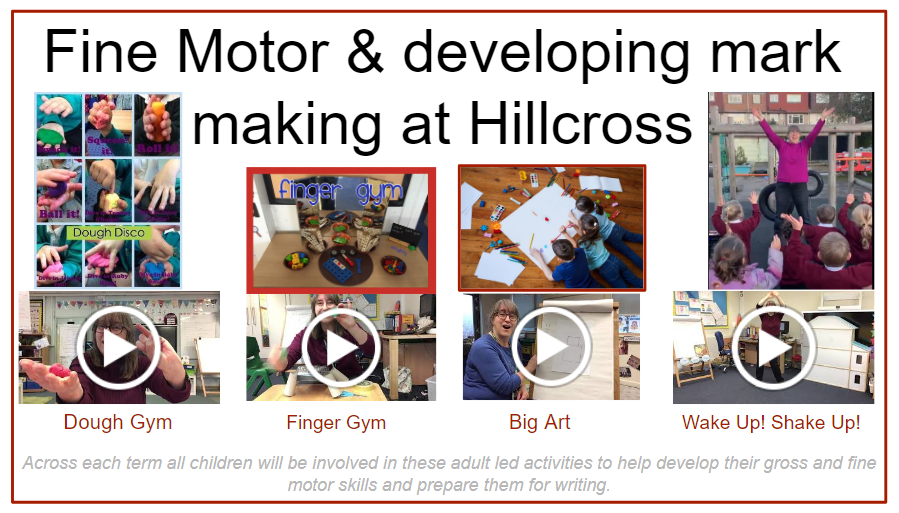
Early Mark Making
Once a child is confident within these skills and area of development, the focus then moves onto pencil control and making correctly formed marks.
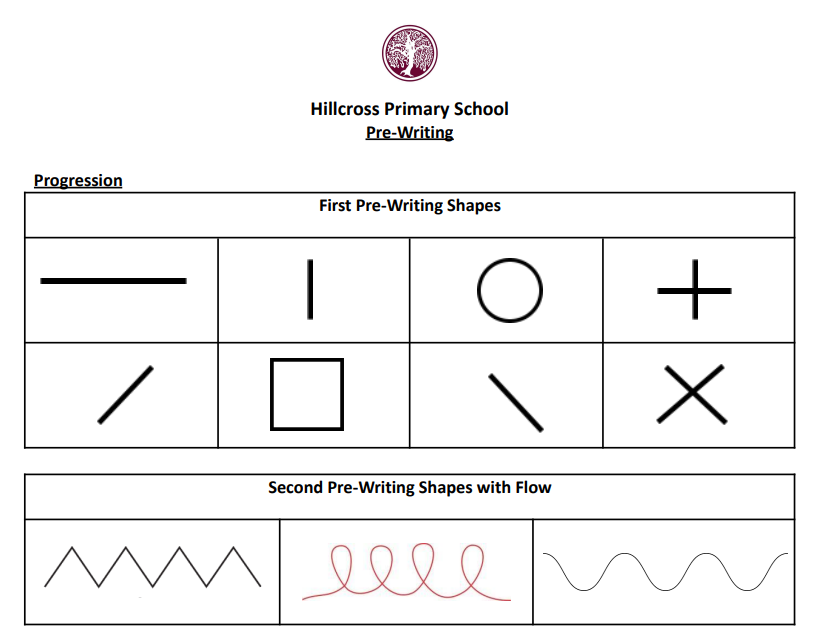
Handwriting begins in Nursery with the teaching of YELs. These are key mark making symbols and movements that are used within the writing of letters. The YELs are pre-writing shapes and marks that provide the stepping stones to building correctly formed cursive letters. The movements used to form YELs become embedded in the muscle memory and help letter formation to flow. Please see the YELs progression grid below. Nursery work on these movements, focusing on one per term across their Nursery year. These YELs not only develop a child's pencil control but have also improved the levels of confidence in our children, with observations of child-initiated writing increasing over time. Children will now 'write' using these marks in their play and can confidently tell an adult what they have written. Once children have mastered these movements on both large and small scale they are then ready to begin forming letters.
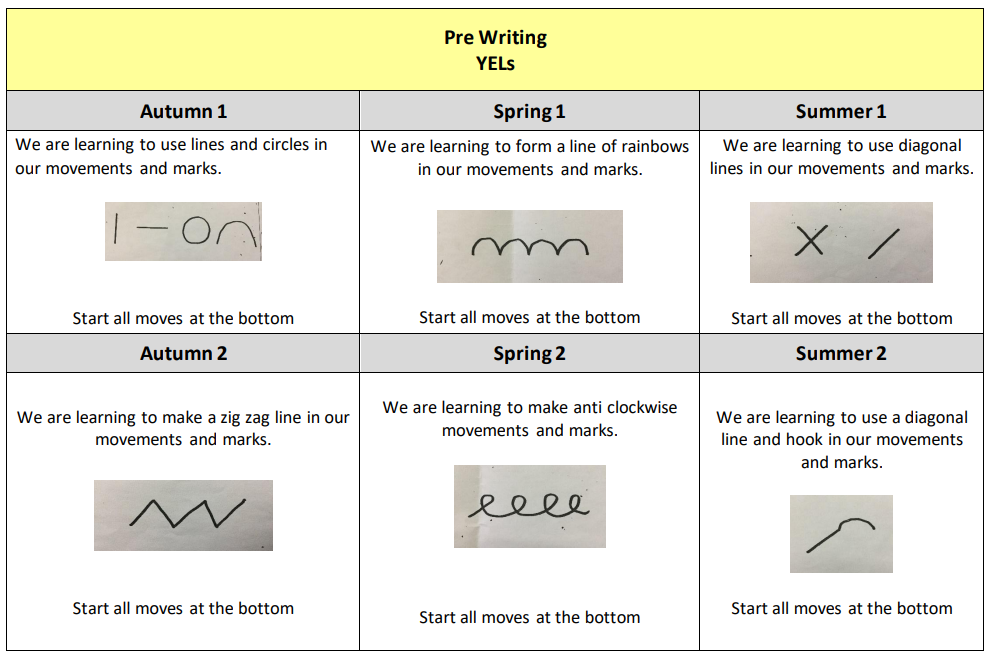
The ability to form recognisable letters can raise self-esteem and provides a motivating factor in the production of written work. Handwriting at Hillcross is taught using the Hepplewhite Handwriting script. We focus initially on the formation of each letter shape in large form; writing with chalk on the ground outside, painting the shapes of the letters onto large paper and making large letter shapes in the air. Air writing from part of every phonics sessions in the Autumn term of Reception, allowing the children to develop muscle memory by forming these graphemes on a large scale. Children are exposed to writing in different forms across all of our unit, allowing them to use writing in real-life situations and within their play. Over time children are encouraged to use the correct formation in more formal writing sessions and within weekly handwriting. An important factor in the presentation of letters is children developing the correct pencil grip. A correct pencil grip will also ensure that writing is comfortable for the child and that they have full control over the mark making tool.
Developing an Effective Pencil Grip
I strongly recommend introducing the tripod grip for this age range – provide constant kind modelling with a child-friendly mantra such as the ‘froggy legs hold’ (or similar) to help them remember: “Let me help you. Put your froggy legs [thumb and forefinger] on the bottom of the painted part of the pencil [not on the cone-shaped end part] with the pencil across the frog’s back [back of the hand], then put the log under the frog” [middle finger supporting the pencil to complete the tripod grip].
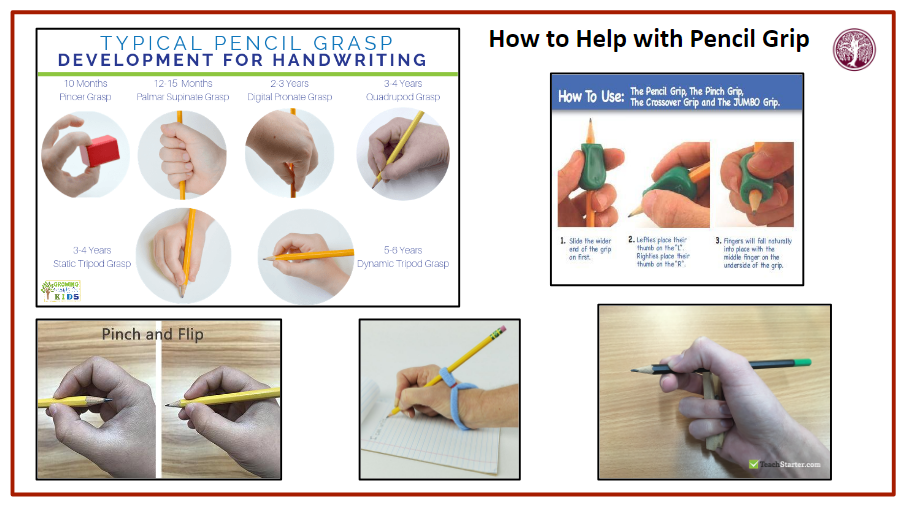
We encourage children to develop their pencil grip across their time in EYFS, moving from a grasp to the formal 'froggy grip' once they are physically able to do so. Once a child is physically ready then we will begin to focus on forming letters on paper, starting with their name. Muscle memory is a huge factor in forming letters and so we believe that children should take time to develop their formation in cursive script. This can sometimes take longer to develop than the standard print writing but what is essential is that the children form letters correctly and comfortably so that they can develop confidence and a love for writing.
In Reception, we move into daily handwriting practise in the Spring term, incorporating it into our daily phonics sessions. Children will continue to be supported in this area through our physical development sessions if their fine motor skills are still developing.
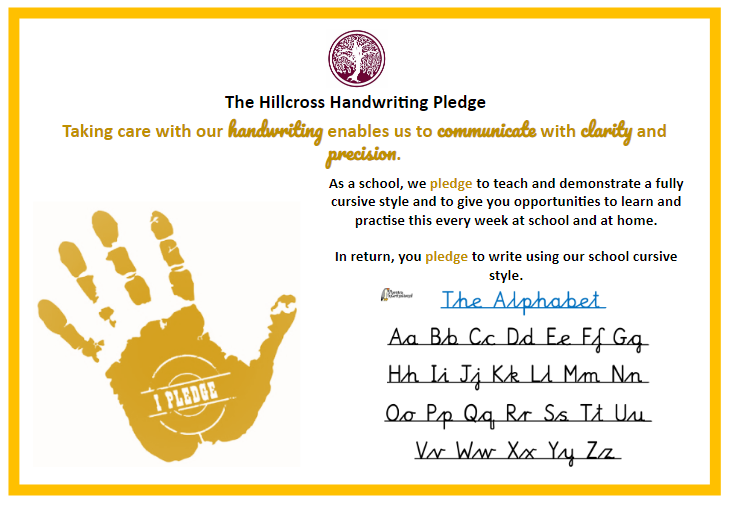
'I emphasise handwriting as the third core phonics skill: 1) decoding (synthesizing) – sounding out and blending all-through-the-printed-word for reading, 2) encoding – oral segmenting all-through-the-spoken word for spelling then allotting letters and letter groups for the identified sounds, and 3) handwriting – linking letter shapes to sounds, learning letter formation for capital and lower case letters and that both the matched capital and lower case letters are code for the same sounds, holding the pencil with tripod grip, orientating letter shapes and knowing their position on writing lines.'
(Debbie Hepplewhite NATE Article "Teaching English", Primary Matters, Spring 2017)
At Hillcross, we are extremely proud of our joint physical development and handwriting provision and have seen the benefits of spending time on developing children's physical development and pre writing skills before moving onto formal writing practise.


